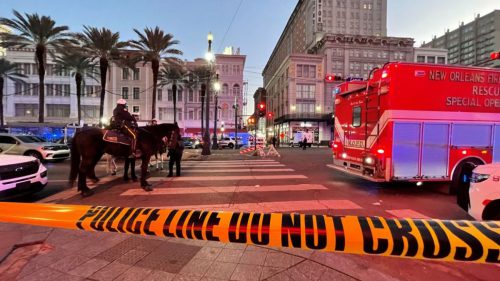

BreakPoint
Apply today for the 2007 Centurions Program and study Biblical worldview for a year with Chuck Colson! Deadline for applications is November 30.
“Pennsylvania Amish Community Prepares to Bury School Shooting Victims, Urges Forgiveness,” Associated Press, 5 October 2006.
Ann Curry, “Amish Display the True Meaning of Forgiveness,” MSNBC, 4 October 2006.
Laurie Goodstein, “Strong Faith and Community May Help Amish Cope with Loss,” New York Times, 4 October 2006.
Rod Dreher, “Amish Faith Shines, Even in Tragic Darkness,” Dallas Morning News, 6 October 2006.
Joshua Partlow and Raymond McCaffrey, “A Plain and Profound Farewell,” Washington Post, 6 October 2006, A14.
Read more articles linked on Christianity Today’s Weblog.
Thomas à Kempis, The Imitation of Christ (1418).
And the Darkness Has Not Overcome It
Two stories have dominated the news in the past week: the Foley scandal and the shooting of Amish schoolchildren in Pennsylvania. One of these stories is depressing. The other is a vivid example of what it means to be the Light of the world. On October 2, Charles Carl Roberts entered a one-room Amish schoolhouse and took ten girls hostage. An hour later, Roberts killed five of his hostages and then killed himself. From the start, these school killings stood out from other such attacks: The killer, first of all, was an adult, not a student; and then there was the irony of the Amish, a pacifist community that resists what it regards as the contagions of modernity, falling victim to a very modern kind of violence. Most remarkable is what happened in the schoolhouse itself. Thirteen-year-old Marian Fisher, one of the Amish girls held captive, displayed Christ-like love: She offered to lay her life down for her friends, reportedly telling her would-be killer, “Shoot me and leave the other ones loose!” And even in the painful aftermath of the shootings, the Amish continued their witness to the love of Christ, reaching out to Roberts’s family, attending Roberts’s funeral, comforting his wife and children, and providing for them through a fund established for Roberts’s victims and their families. One victim’s family even invited the Roberts to their daughter’s funeral. In the most dramatic way, they forgave Roberts. As I watched the news, it was clear that the media had trouble understanding the kindness and forgiveness extended to Roberts and his family. It wasn’t the first time that Christian grace and charity confused people. Early Christians, unlike their pagan neighbors, cared for the sick during the periodic epidemics that afflicted the late Roman Empire. The sight of Christians staying while everyone else fled confounded their critics and confused their neighbors. Many but not all: In its first centuries, Christianity grew at 40 percent per decade. By the time of Constantine, at least 10 percent of the empire was Christian—a remarkable statistic when you recall that to be a Christian at that time was to live with a target painted on your back. What fueled this explosive growth was the way the early Christians loved one another, were concerned for the weak and marginalized, and were willing to die, if necessary, for their faith. These living epistles were the ultimate witness to the truth of the Gospel and its transformative power. What was true of Rome is still true today. People can dispute our words, but they have no answer to a demonstration of forgiveness, reconciliation, and charity. Before the shootings, the Amish seemed quaint. Now, they’re extraordinary. Ironically, they inspire us yet another way. In classrooms across America, students are force-fed Darwinism. They are taught that we are the products of random processes and natural selection—that is, the survival of the fittest. But in the Amish classroom, that thesis is demolished by self-sacrificing love, the one thing Darwin could never explain. So the Amish have given us a powerful demonstration of the truth of the Biblical worldview and, indeed, of the Light of the world.
| For Further Reading and Information |
10/11/06















